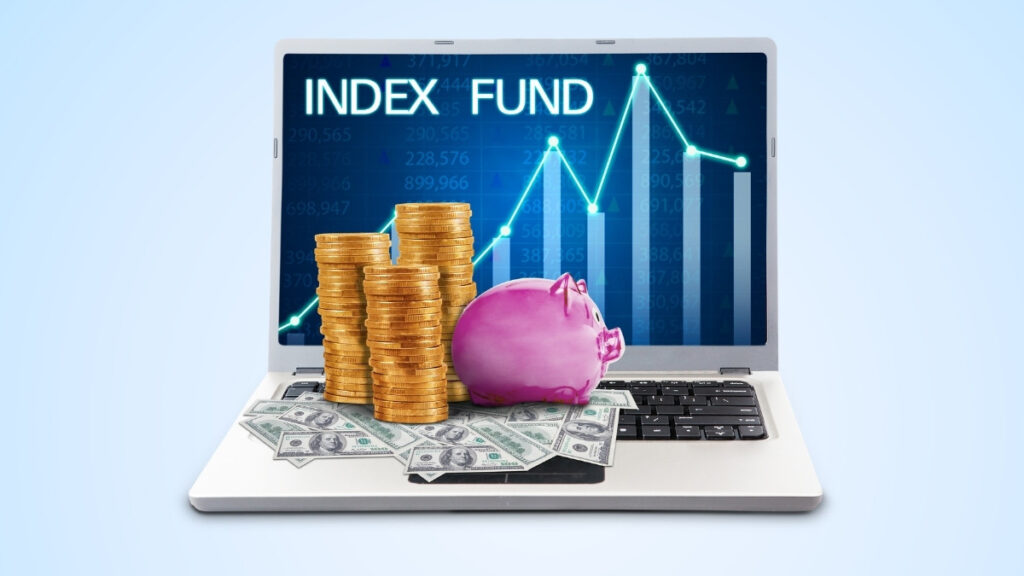
While most investors wait until year-end to worry about capital gains, the wealthy are quietly executing tax-saving maneuvers right now—strategies that could save them $50,000, $500,000, or even millions in 2025.
If you’re facing significant capital gains from stock sales, real estate, or business exits, standard advice like “hold for a year” or “use a 1031 exchange” isn’t enough. You need the advanced capital gains tax harvesting 2025 strategies that financial advisors reserve for ultra-high-net-worth clients.
In this guide, you’ll discover 11 specific harvesting techniques beyond basic tax-loss harvesting, exact 2025 thresholds and deadlines, real calculations showing potential tax savings, and crucially—when each strategy makes sense and when it doesn’t. These tax reduction strategies and investment tax planning moves could dramatically change your tax bill before December 31st.
What Changed for Capital Gains in 2025 (And Why It Matters)
First, let’s get clear on what you’ll pay in 2025.
If you’re single and your taxable income is below $48,350, you pay 0% on long-term capital gains. That’s right—zero. For married couples filing jointly, that number jumps to $96,700.
Make between $48,351 and $533,400 as a single filer? You’ll pay 15%. For married couples, the 15% bracket runs from $96,701 to $600,050.

Above those amounts, you’re in the 20% bracket.
But wait. There’s more. High earners also face the Net Investment Income Tax (NIIT). That’s an extra 3.8% on top of everything else. This kicks in at $200,000 for single filers and $250,000 for married couples.
So if you’re in the top bracket and hit the NIIT, you’re paying 23.8% total on capital gains.
Here’s why this matters: Long-term gains (assets held more than one year) get these special rates. Short-term gains (held one year or less) get taxed as ordinary income. That could mean paying 37% or more at the federal level.
The difference between short-term and long-term can cost you thousands. On a $50,000 gain, you might pay $7,500 in taxes if it’s long-term. That same gain could cost you $18,500 if it’s short-term and you’re in a high bracket.
Know your brackets. Know your holding periods. This is the foundation for everything else.
Strategy #1: Sell Stocks in the 0% Bracket (Yes, Really)
Most people try to avoid selling winners. They don’t want to pay taxes.
But what if you could sell and pay nothing?
If your taxable income falls below $48,350 (single) or $96,700 (married), you can sell appreciated stocks and pay zero capital gains tax. Then you can buy the same stocks back immediately. Your cost basis resets to the new, higher price. No taxes paid.

This is called tax-gain harvesting. It’s the opposite of tax-loss harvesting, and most people have never heard of it.
Here’s how it works in real life:
Example: Sarah and Mike are married. They both work and earn $115,000 combined. They take the standard deduction of $30,000. That drops their taxable income to $85,000.
They’re below the $96,700 threshold by $11,700. So they can sell stocks with $11,700 in gains and pay zero tax. They bought Tesla stock years ago for $20,000. It’s now worth $31,700. They sell it all. No tax bill. Then they buy it right back.
Why does this help? Because if they wait until later when they’re earning more, they might pay 15% or 20% on those same gains. By selling now in the 0% bracket, they lock in a higher cost basis for free.
Who should do this:
- People between jobs
- Early retirees with low current income
- Anyone taking a sabbatical
- Couples where one spouse stops working
The trick is timing. You need to know your total income for the year. Check in October or November. If you’re under the threshold, make your move before December 31.
One warning: Don’t forget about other income sources. Bonuses, side gigs, rental income—they all count toward your total.
This strategy is simple. It costs nothing. And it can save you thousands down the road.
Strategy #2: Own Individual Stocks, Not Just Index Funds
Here’s a problem with index funds: When one stock in the fund drops, you don’t get to sell just that stock and harvest the loss. You’re stuck with the whole package.

Direct indexing solves this.
Instead of buying an S&P 500 fund, you buy all 500 individual stocks. Or a good chunk of them. This is done through separately managed accounts (SMAs).
Why? Because when individual stocks drop, you can sell them, lock in the loss, and replace them with similar stocks. You still track the index. But now you’re generating tax losses throughout the year.
Not just in December. Every single day.
Studies show this can boost your after-tax returns by 1-2% per year. On a $500,000 portfolio, that’s an extra $5,000 to $10,000 annually.
Here’s what most people miss: Even in good years, individual stocks go down.
In 2023, the S&P 500 was up 26%. Great year, right? But 22% of stocks in the index were down 5% or more by year-end. And 72% of stocks dropped 5% or more at some point during the year.
That creates opportunities. When Stock A drops 5%, you sell it, harvest the loss, and buy Stock B in the same sector. Your portfolio still tracks the market. But you just created a $2,500 tax loss on a $50,000 position.
Do this across 50 stocks, and you might generate $15,000 to $30,000 in losses. Even in an up market.
The math: Let’s say you harvest $25,000 in losses. That offsets $25,000 in gains elsewhere. If you’re in the 20% capital gains bracket plus the 3.8% NIIT, you just saved $5,950 in taxes.
Every year.
What you need:
- At least $100,000 to make the fees worth it (though some firms go lower)
- A separately managed account
- Daily or monthly monitoring (automated by most platforms)
Firms like Parametric, Wealthfront, and many major brokers offer this now. The technology has gotten better and cheaper.
This isn’t for everyone. But if you have a sizeable taxable account, the tax savings can easily beat any extra fees.
Strategy #3: Give to Charity and Never Pay Capital Gains
You bought Amazon stock for $50,000. It’s now worth $200,000. You want to donate to charity.
Bad move: Sell the stock, pay $35,700 in taxes, donate the remaining $164,300.

Smart move: Donate the stock directly. Get a $200,000 tax deduction. Pay zero capital gains tax. The charity gets the full $200,000.
This works with any public stock, mutual fund, or even real estate.
But wait—there’s an even better strategy for major assets.
Enter the Charitable Remainder Trust (CRT)
You own a rental property worth $500,000. Your cost basis is $100,000. That’s $400,000 in gains. If you sell, you’ll pay roughly $95,200 in capital gains taxes (assuming 20% rate plus 3.8% NIIT).
Instead, you transfer the property to a CRT. The trust sells it. No immediate taxes. The trust invests the full $500,000. You receive an income stream for life (you pick the percentage—anywhere from 5% to 50% annually). When you die, what’s left goes to charity.
You also get an immediate tax deduction for the charitable portion. That deduction amount depends on your age, the payout rate, and IRS calculations. But it could be $150,000 or more.
The full breakdown:
- Property value: $500,000
- Your cost basis: $100,000
- Capital gains tax avoided: $95,200
- Income to you: 5% annually = $25,000/year
- Immediate tax deduction: ~$150,000 (saves ~$42,000 in taxes at 28% rate)
- Total tax savings: $137,200
You keep getting income for life. You get a huge tax deduction now. And you eliminate the capital gains tax completely.
Who this works for:
- Anyone with highly appreciated assets
- People who want to support charity anyway
- Real estate owners tired of managing properties
- Business owners planning to sell
The downside? This is irrevocable. Once the asset goes into the trust, you can’t get it back. Your heirs won’t inherit it directly (though they benefit from the income and tax savings).
This requires lawyers and good planning. But the tax savings can be massive.
Strategy #4: Exclude Up to $15 Million in Startup Gains
If you own stock in a qualified small business, you might exclude huge amounts of capital gains from taxes. We’re talking millions.

This is called the Qualified Small Business Stock (QSBS) exclusion under Section 1202. And 2025 brought major changes.
New rules for stock issued after July 4, 2025:
- $15 million exclusion per person (up from $10 million)
- Tiered exclusions based on holding period:
- 50% excluded at 3 years
- 75% excluded at 4 years
- 100% excluded at 5 years
- Asset cap raised to $75 million (from $50 million)
What counts as QSBS: The company must be a C-corporation with under $75 million in assets when the stock is issued. You must acquire the stock at original issuance (not buy it from someone else). The company must use 80% of its assets in an active business.
How big is this? Let’s say you’re a startup founder. Your company gets acquired for $30 million. You own stock issued after July 2025. You’ve held it for 5 years.
Without QSBS: You owe $7.14 million in federal capital gains taxes (23.8% rate).
With QSBS: You exclude $15 million. You owe $3.57 million.
You just saved $3.57 million.
But it gets better. You can stack this with family gifting.
Gift QSBS stock to your spouse before the sale. They get their own $15 million exclusion. Now you’ve excluded $30 million combined. On a $30 million exit, you might pay zero federal capital gains tax.
You can also gift QSBS to trusts for your kids. Each trust can potentially claim its own exclusion.
The catch: This is complex. The rules are strict. You need to document everything from day one. Get legal and tax help.
But if you’re building a startup or work at one, this could be worth millions.
Strategy #5: Invest in Opportunity Zones Before It’s Too Late
Important deadline: The original capital gains deferral ends December 31, 2026.

Here’s how Opportunity Zones work:
You sell an asset and realize a capital gain. Within 180 days, you invest that gain into a Qualified Opportunity Fund (QOF). The fund invests in designated low-income areas.
What you get:
- Defer taxes until you sell the QOF investment or December 31, 2026 (whichever comes first)
- Eliminate taxes completely on any appreciation in the QOF if you hold for 10 years
Example: You sell a stock position and make a $5 million gain. Normally, you’d owe about $1.19 million in taxes.
Instead, you invest the $5 million in a QOF. You don’t pay the $1.19 million now—it’s deferred. The QOF grows to $10 million over 10 years. You sell.
You pay the deferred $1.19 million on the original gain. But the $5 million in QOF appreciation? Tax-free.
The full math:
- Without OZ: Pay $1.19M now, invest $3.81M, grow to $6.71M after 10 years (assuming 5.8% growth)
- With OZ: Defer $1.19M, invest $5M, grow to $8.81M, pay $1.19M = $7.62M net
You’re ahead by about $910,000.
And it gets better. The 2025 Reconciliation Act made the program permanent with rolling 5-year deferrals for new investments. Stock issued after 2025 gets a 30% basis step-up for rural funds.
The risks:
- These are often real estate developments in economically distressed areas
- Less liquid than public stocks
- Returns aren’t guaranteed
- You’re locked in for 10 years to get the full benefit
Who should consider this:
- Anyone with a large one-time gain (business sale, property sale, concentrated stock position)
- People with long time horizons
- Those comfortable with illiquid real estate investments
The clock is ticking on the original deferral opportunity. If you have gains in 2025, you have until mid-2026 to invest. After that, new gains can still benefit from the appreciation exclusion, but the deferral window closes.
Strategy #6: Trade Your Rental Property Without Paying Taxes
You’ve been a landlord for 15 years. You’re tired of 2am phone calls about broken water heaters. But selling means a huge tax bill.

There’s another option: the 1031 exchange with Delaware Statutory Trusts (DSTs).
Standard 1031 exchanges let you trade one investment property for another without paying capital gains tax. But you have tight deadlines:
- 45 days to identify replacement properties
- 180 days to close
And you often end up as a landlord again.
DSTs change the game.
Instead of buying another rental property you manage yourself, you buy fractional interests in institutional-grade properties. Think shopping centers, apartment complexes, medical buildings. Professional managers handle everything.
Here’s how it works:
You own a $2 million rental property with a $500,000 cost basis. If you sell normally, you owe roughly $357,000 in capital gains taxes.
Instead, you do a 1031 exchange into four different DST properties:
- $500,000 in a Class A apartment complex
- $500,000 in a medical office building
- $500,000 in an industrial warehouse
- $500,000 in a retail center
You defer all taxes. You diversify across property types and locations. You stop dealing with tenants. And you keep getting monthly income from the properties.
Want to move again? Do another 1031 exchange into different DST properties. You can chain these exchanges indefinitely.
The rules:
- Must be investment or business property (not personal residence)
- Must identify replacement properties within 45 days
- Must close within 180 days
- Must use a qualified intermediary
- Debt levels need to match (or you add cash)
The downside: DSTs charge fees. You give up control. And you can’t access your money easily until you sell (which triggers taxes unless you do another exchange).
Who benefits most:
- Landlords who want passive income
- People moving and don’t want to manage property remotely
- Anyone wanting to diversify a single property into multiple assets
- Those planning to pass property to heirs (step-up in basis at death eliminates the deferred gain)
This isn’t for everyone. But if you’re sitting on appreciated rental property and dreading another year of property management, DSTs offer an escape route.
Strategy #7: Sell Your Business Over Time, Not All at Once
You’re selling your business for $500,000. You could take the money now and pay taxes on the full gain this year.
Or you could spread the payments—and the taxes—over 10 years.

This is called an installment sale under IRC Section 453.
How it works: The buyer pays you in installments over time. You only pay tax on the portion of each payment that represents your gain.
Example: You sell your business for $500,000. Your cost basis is $100,000. That’s $400,000 in gains. The buyer agrees to pay $50,000 per year for 10 years.
Each year, 80% of each payment ($40,000) is taxable as gain. The other 20% ($10,000) is return of your basis.
Year 1 taxes: $40,000 gain × 23.8% = $9,520
Instead of paying $95,200 all at once, you pay $9,520 per year for 10 years.
Why this helps:
- Spreads tax burden over multiple years
- Might keep you in a lower bracket each year
- Gives you time to plan other deductions and strategies
- Buyer gets to pay over time (easier financing)
Important warning: Any depreciation recapture must be recognized in the year of sale. So if you sold a rental property or business with depreciated assets, that portion gets taxed immediately.
The Structured Installment Sale
There’s a more sophisticated version: the structured installment sale.
You sell the asset. But instead of the buyer paying you directly, they pay a third-party assignment company. That company issues you a structured settlement—essentially an annuity that pays you over time.
The benefits:
- Predictable, guaranteed payments
- No risk the buyer defaults
- More flexibility in payment timing
- Potential to eliminate taxes entirely with proper planning
Example: You sell appreciated property for $1 million. You have a $200,000 basis. The buyer pays the assignment company $1 million upfront. The company issues you a 20-year structured payout.
You defer $800,000 in gains over 20 years. Each year, you pay tax on a portion. But you might use other strategies (charitable deductions, tax-loss harvesting) to offset those gains along the way.
With careful planning, you could end up paying little or no tax over the life of the structure.
Who should consider this:
- Business owners planning to sell
- Real estate investors (though 1031 exchanges might be better)
- Anyone wanting guaranteed income in retirement
- People with other deductions to offset future gains
This gets complicated fast. You need good advisors. But the tax deferral can be significant.
Strategy #8: Donate Stock, Not Cash (Then Buy More Stock)
You plan to donate $50,000 to charity this year. You have $50,000 in cash and $50,000 in stock you bought years ago for $20,000.

Donate the stock. Keep the cash.
When you donate appreciated securities directly to a charity (or donor-advised fund), two good things happen:
- You avoid capital gains tax on the appreciation
- You deduct the full fair market value (up to 30% of your adjusted gross income)
The math:
- Stock current value: $50,000
- Your cost basis: $20,000
- Appreciation: $30,000
If you sold the stock and donated cash:
- Capital gains tax: $7,140 (at 23.8%)
- Cash donated: $50,000
- Tax deduction: $50,000 (saves ~$14,000 at 28% tax rate)
- Net cost: $43,140
If you donate the stock directly:
- Capital gains tax: $0
- Stock donated: $50,000
- Tax deduction: $50,000 (saves ~$14,000)
- Net cost: $36,000
You save $7,140 by donating stock instead of cash.
Here’s the bonus move: After donating the stock, use your cash to buy the same stock back. Now you own the same number of shares, but with a much higher cost basis. You’ve effectively reset your basis without paying taxes.
The Donor-Advised Fund Strategy
Don’t want to decide where the money goes right now? Use a donor-advised fund (DAF).
You donate the appreciated stock to the DAF. You get the immediate tax deduction. The stock is sold inside the fund (no capital gains tax). The money sits in the fund, growing tax-free. You recommend grants to charities over time.
Why this matters:
- Bunch several years of donations into one year for a bigger deduction
- Take the deduction now, give to charities later
- Let the money grow tax-free before donating
- Simplifies your record-keeping
If you can’t use the full deduction this year, you can carry it forward for five years.
Who should do this:
- Anyone planning to donate anyway
- People with highly appreciated stock
- Those wanting to reduce a high-income year
- Investors looking to rebalance without triggering taxes
This is one of the simplest and most effective strategies. Almost anyone with appreciated stock should consider it.
Strategy #9: Sell Winners and Losers on the Same Day
Your portfolio is up overall this year. But not every stock is a winner.
The strategy: Rebalance by selling both winners and losers strategically.

Let’s say your tech stocks are up $50,000. Your energy stocks are down $30,000. You were planning to rebalance anyway—you’re too heavy in tech.
Sell $200,000 of tech stocks (with $50,000 in gains). Sell $100,000 of energy stocks (with $30,000 in losses). You’ve rebalanced. And you only pay taxes on $20,000 in net gains instead of $50,000.
Tax savings: $20,000 × 23.8% = $4,760
You can also offset up to $3,000 of ordinary income with excess capital losses. If your losses exceed your gains by $5,000, you can use $3,000 against ordinary income this year and carry forward $2,000 to next year.
Unused losses carry forward indefinitely. You never lose them.
The wash sale rule: You can’t repurchase the same or substantially identical security within 30 days of harvesting a loss. If you do, the IRS disallows the loss.
How to avoid it:
- Wait 31 days before buying back
- Buy a similar but not identical investment (sell Vanguard S&P 500 fund, buy Schwab S&P 500 fund)
- Rotate between similar positions throughout the year
Example rebalancing plan:
You have $500,000 in tech stocks (70% of portfolio). You want to be at 50%. You also have underperforming small-cap stocks.
- Sell $150,000 in tech stocks with $30,000 in gains
- Sell $50,000 in small-caps with $15,000 in losses
- Buy $200,000 in bonds or international stocks
- Net taxable gains: $15,000 instead of $30,000
You’ve rebalanced your portfolio, reduced concentration risk, and cut your tax bill by $3,570.
Do this consistently, and the savings add up fast.
Strategy #10: Act in November, Not December
Most people wait until December to think about taxes. By then, it’s too late for many strategies.
Start your tax planning now. In November, you know most of your income for the year. You can see which bracket you’ll land in. You have time to execute strategies before year-end.

What to do right now:
- Calculate your projected taxable income. Add up wages, bonuses, business income, capital gains you’ve already realized, dividends, and interest.
- Review every position for tax opportunities. Look for:
- Stocks down that you can sell for losses
- Concentrated positions you should trim
- High-cost funds to replace with cheaper ones
- Time mutual fund distributions. Many funds pay out capital gains in December. If you’re planning to harvest losses, do it before those distributions hit your account.
- Use specific share identification. When you sell, don’t use “average cost.” Pick the specific shares with the highest cost basis to maximize your losses (or minimize your gains).
Example: You bought Apple stock three times:
- 100 shares at $100 = $10,000
- 100 shares at $150 = $15,000
- 100 shares at $180 = $18,000
Current price: $170 per share
If you sell 100 shares using “average cost,” your basis is about $143 per share. Your gain is $2,700.
If you use specific identification and sell the shares bought at $180, your loss is $1,000.
That’s a $3,700 difference in taxable income.
Don’t forget state taxes. Most states tax capital gains as ordinary income. If you’re in California, add 13.3% to your federal rate. That makes the total rate 37.1% for high earners.
New York? Add 10.9%. Total rate: 34.7%.
Planning around state taxes can save thousands more.
Pro tip: If you’re moving to a state with no income tax (Florida, Texas, Nevada, etc.), time your stock sales for after the move. That state tax savings might be bigger than the federal savings from loss harvesting.
Strategy #11: Give Winners to Parents, Not Cash
Your retired parents need financial help. You were planning to give them $30,000 from your savings.

Better idea: Give them $30,000 in appreciated stock instead.
Here’s why: If they’re in the 0% capital gains bracket (taxable income below $96,700 for married couples), they can sell the stock and pay no federal tax.
Example:
- You bought Microsoft stock for $10,000
- It’s now worth $30,000
- Your parents’ taxable income: $70,000
If you sell and give them cash:
- You pay $4,760 in capital gains tax
- They get $25,240
If you gift them the stock directly:
- They sell and pay $0 in tax
- They get the full $30,000
You just saved $4,760.
How it works: When you gift stock, the recipient takes your cost basis. They also inherit your holding period. So it counts as a long-term gain for them.
The annual gift tax exclusion in 2025 is $18,000 per person. You can give $18,000 to your mom and $18,000 to your dad without filing a gift tax return. If you’re married, your spouse can do the same. That’s $72,000 total with no tax filings.
Watch out for kiddie tax. If you’re gifting to children under 19 (or under 24 if they’re full-time students), different rules apply. Investment income above $2,500 gets taxed at the parents’ rate, not the child’s rate.
But for adult children with low income, retired parents, or other relatives in low brackets, this strategy works perfectly.
Combine with QSBS: If you have QSBS stock, you can gift it to family members before a sale. Each recipient potentially gets their own exclusion. This multiplies the tax benefits across multiple people.
Who benefits:
- High earners supporting low-income relatives
- Parents helping adult children through graduate school
- Anyone planning to give money to family anyway
This is simple to execute. It costs nothing. And it can save significant taxes.
Take Action Now
You’ve just learned 11 ways to keep more of your investment gains. Some are simple—like gifting stock to relatives. Others need professional help—like setting up a charitable remainder trust.
Start here:
- Calculate your 2025 taxable income. Are you in or near the 0% capital gains bracket? If yes, harvest gains by December 31.
- Look at your portfolio. Do you have positions you’d rebalance anyway? Pair winners with losers to reduce taxes.
- Planning to donate this year? Donate appreciated stock instead of cash.
For bigger strategies—QSBS planning, opportunity zones, charitable trusts—get professional help. Find a CPA and financial advisor who specialize in capital gains tax strategies. The complexity is worth it when you’re dealing with six or seven-figure gains.
The difference between doing nothing and using these strategies could be tens of thousands of dollars. Or more.
The tools are here. The information is clear. Now it’s your move.





